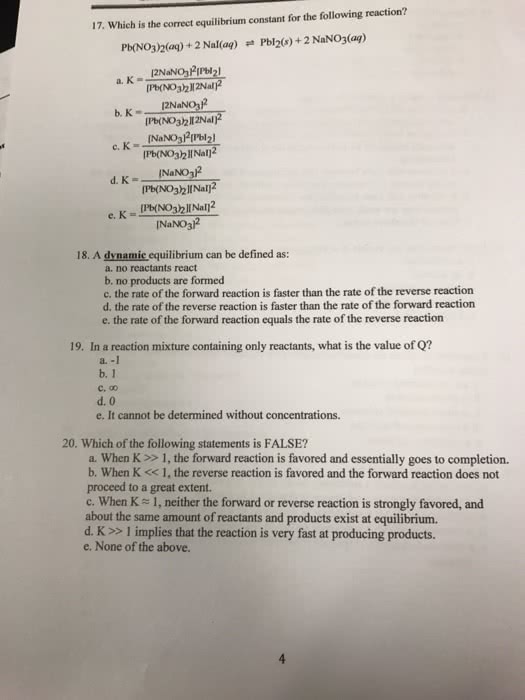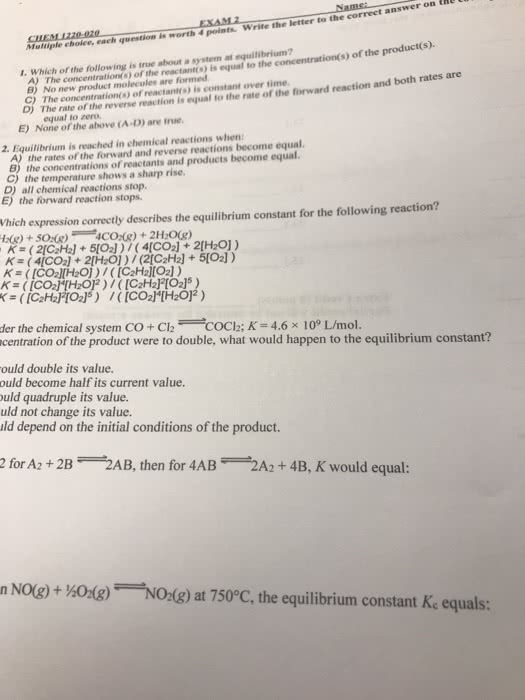CHE 1302 Study Guide - Midterm Guide: Dynamic Equilibrium, Equilibrium Constant, Chemical Equation
Document Summary
When a reaction appears to stop it"s because the forward rate = reverse rate at dynamic equilibrium, reactants and products have equal rates of concentrations, pressures (etc. ) Gives an idea of relative amounts of reactants and products. [(cid:1805)(cid:1803)(cid:1820)(cid:1814)(cid:1820)(cid:1819)] gives the equilibrium constant by using equilibrium concentrations. K has no units and the exponent of each concentration is always the stoichiometric. If a chemical equation, the expression of kc will change and its value too. Kc for reverse reaction = (cid:1806)(cid:1815)(cid:1818) (cid:1820)(cid:1808)(cid:1805) (cid:1806)(cid:1815)(cid:1818)(cid:1818)(cid:1804) (cid:1818)(cid:1805)(cid:1803)(cid:1820)(cid:1809)(cid:1815)(cid:1814) Equilibria involving gases: for gases, it"s more convenient to measure partial pressures instead of molarities. 14. 7 the reaction quotient: predicting the direction of change. Q, the reaction quotient: used for a reaction that isn"t @ equilibrium yet, used when you need to know what direction (forward or reverse) the reaction will proceed to get to equilibrium. Qc and qp has the same as kc or kp, but it applies to non-equilibrium conditions.













